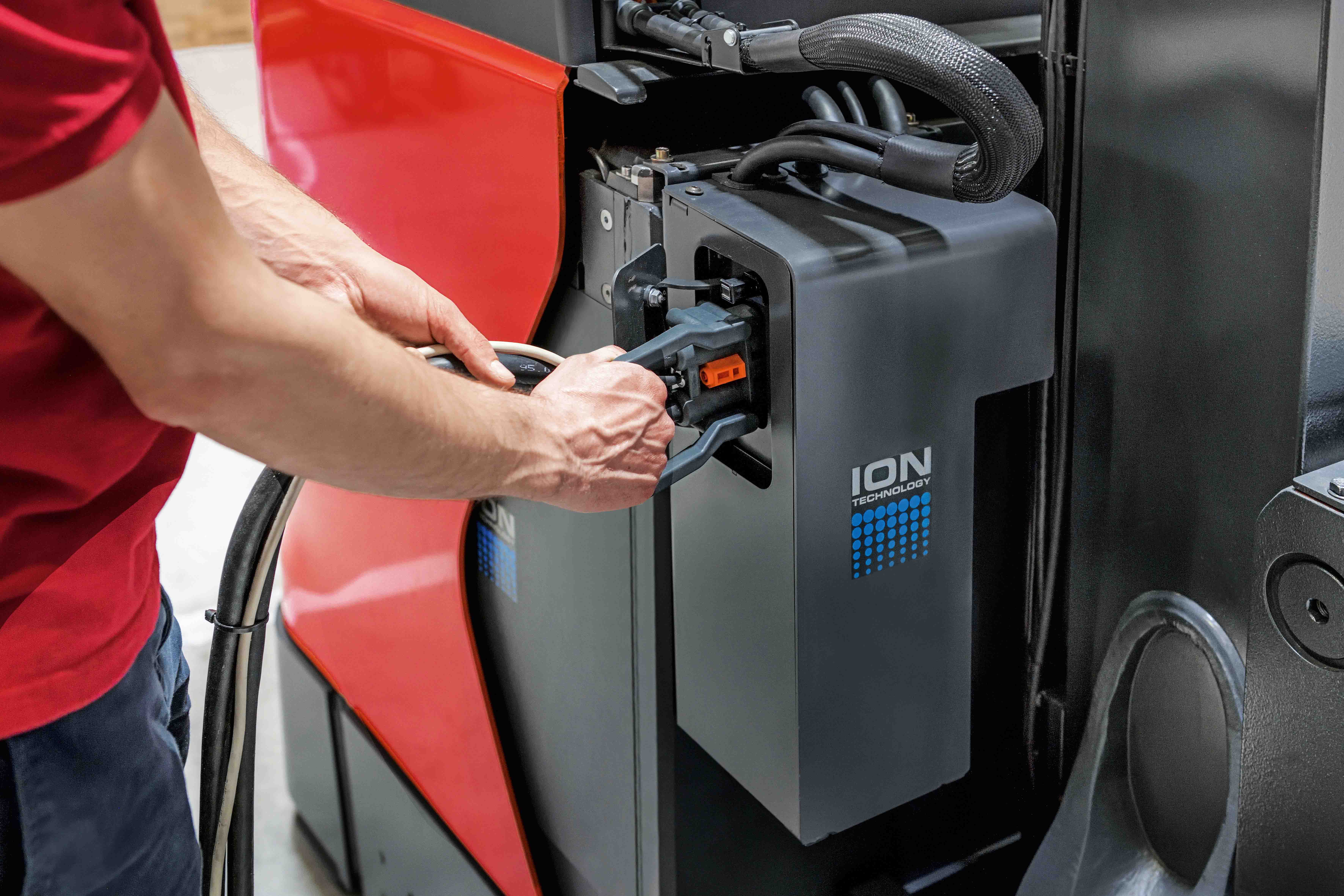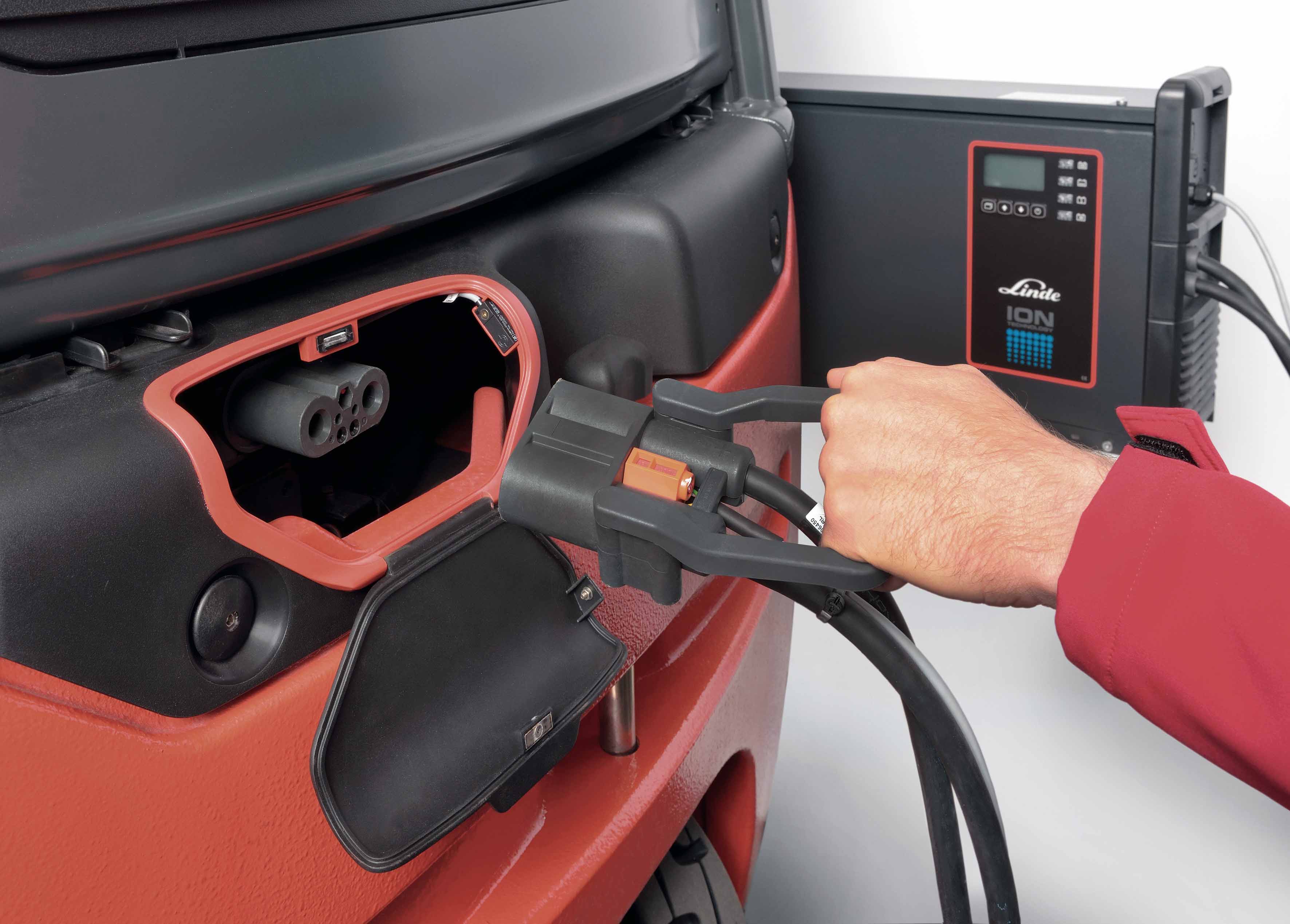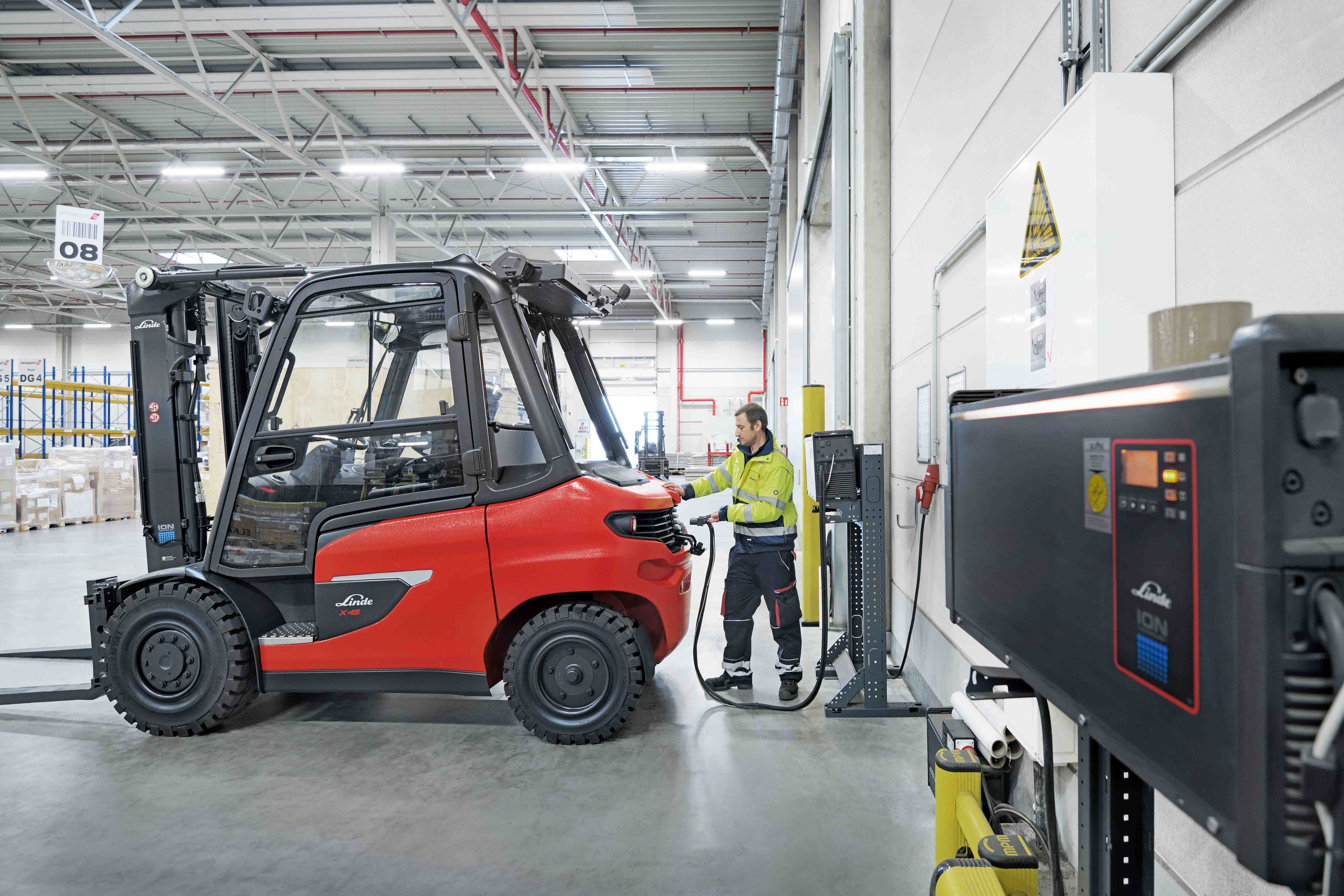Interest in Lithium-ION batteries for industrial trucks is on the rise, with more companies adopting them. Despite this, there's widespread confusion about the technology. This article aims to debunk common myths and emphasize the benefits of Lithium-ION batteries.
Myth 1: Electric machines can't handle heavy lifting.
Modern battery-powered equipment can match the lifting capacity of internal combustion engine (ICE) models. Linde's motors and control electronics offer top-notch performance, ensuring minimal power loss and maximum energy efficiency. For instance, our new X-series trucks are designed to perform comparably to Linde Hydrostatic IC-powered trucks.
While lifting does consume energy, electric units are more energy-efficient than IC units. The main consideration is the machine's ability to store and utilize energy. Users should assess if there are enough opportunities to charge batteries during the workday.
Watch this video for insights on how Lithium-ION technology functions and how Linde selects the appropriate variation for its trucks.
Myth 2: Swapping a lead-acid battery for a Lithium-ION one guarantees all benefits.
While aftermarket Lithium-ION batteries are a vast improvement over lead-acid ones, the real advantages come from factory-fitted OEM Lithium-ION batteries.
These integrated batteries offer CANbus connectivity, allowing the truck's factory Battery Discharge Indicator (BDI) to function accurately. OEM technicians can also diagnose battery issues via the truck software, eliminating the need for third-party providers.
Moreover, forklifts designed around Lithium-ION batteries can be more compact than their lead-acid counterparts. When considering a swap, users must assess if their applications allow for sufficient charging opportunities. They should also consider additional energy infrastructure costs and the installation of new power points closer to the working area.
Myth 3: Lithium-ION batteries are overly expensive.
Although the initial purchase price of Lithium-ION batteries is higher, they offer a lower cost per cycle due to their increased lifetime. Linde's Lithium-ION batteries boast low inner resistance and efficient technology, resulting in significant long-term savings in charging and CO2 emissions compared to lead-acid batteries. So, in the long run, Lithium-ION batteries can be significantly more economical.
Myth 4: Entire lead-acid fleets need replacement with Lithium-ION machines.
While replacing the entire fleet eliminates the need to switch between different charging regimes and operating procedures, a blended fleet is feasible, and certainly for less-utilized trucks. It's also recommended to replace when there's a corporate drive for change, like a commitment to cut overall CO2 emissions or a desire to eliminate hazardous battery swaps and minimize ongoing maintenance needs. Clear labeling of charging areas and instructions for staff may be necessary due to the different chargers required for lead-acid and Lithium-ION batteries.
Myth 5: Upgrading the power supply is necessary for Lithium-ION batteries.
Lithium-ION battery chargers do indeed demand a higher input current compared to lead-acid chargers due to their higher output. Nonetheless, Linde offers a variety of battery/charger combinations tailored to utilization, application intensity, and available charging windows.
Using small or medium-sized chargers with existing power points keeps peak power draws only slightly above those of existing lead-acid chargers. Additionally, the Linde Lithium-ION range offers a "normal-sized charger" option that utilizes a similar-sized outlet and current rate but charges the battery in half the time compared to the replaced lead-acid charger.
An alternative strategy is to sequence charge trucks throughout the day. Unlike lead-acid batteries that require simultaneous charging at the end of a shift, Lithium-ION batteries do not necessarily need one charger per truck. Staggering the charging process helps limit peak power draw to less than that of lead-acid chargers. However, larger chargers or additional power points closer to work areas may necessitate some investment in the power supply.
Myth 6: Drivers need extensive retraining for Lithium-ION batteries.
Acknowledged, there will be a necessity for retraining, as standards mandate the establishment of policies for safe work systems, including supervised practice, on-the-job training, and regular refresher sessions for all users. Consequently, there's a requirement to maintain records of ongoing training.
The encouraging aspect is that Lithium-ION batteries are user-friendly:
- The battery management system communicates with the charger to prevent overcharging.
- It regulates power delivery to prevent over-discharge.
- There's no need for watering or equalizing charging.
- Operators simply need to know how to plug the battery into the charger when not in use.
Our customers have observed that while work habits require adjustment, it's ultimately beneficial. Ongoing battery maintenance tasks are virtually eliminated, along with the hazards associated with battery changes and the risks of battery damage due to charging errors. Unlike lead-acid batteries, Lithium-ION batteries thrive on opportunity charging, enabling operators to charge their forklifts during breaks. Moreover, the charging process is quicker and simpler since there's no longer a need to open the bonnet to connect the charger to the truck.
Myth 7: Lithium-ION batteries pose safety risks.
This misconception is widespread, but in actuality, lithium-ion batteries are significantly safer than traditional lead-acid batteries. Despite their higher energy density, Linde Lithium-ION batteries incorporate a multi-level safety system at the cell, module, and housing levels. Additionally, they feature a battery management system (BMS) with comprehensive protective functions, guarding against overload, overcharge, deep discharge, excess current, and short circuits.
Developed in-house, Linde Lithium-ION batteries ensure seamless integration and alignment with intelligent vehicle control and battery management in trucks. The CANbus interface facilitates seamless communication among the battery, charger, and truck, operating as a unified system to optimize performance and extend battery life.
Moreover, both the truck and battery undergo rigorous testing as a unified system during the development stage, a practice not consistently performed with lead-acid systems.
Watch this brief video showcasing Linde's stringent testing procedures to ensure the safety of our batteries.
Myth 8: Lithium-ION batteries have a shorter lifespan compared to lead-acid batteries.
Contrary to this belief, Lithium-ION batteries boast a longer cycle life, making them suitable for applications with ample charging opportunities. Thanks to their higher energy density, voltage stability, and lower internal resistance, Lithium-ION batteries offer enhanced power output, efficiency, and rapid charging capabilities.
Typically, Lithium-ION batteries are anticipated to endure approximately 4,000 full cycles, whereas lead-acid batteries typically last around 1,500 cycles.
Myth 9: Lithium-ION batteries are unsuitable for harsh environments.
Once again, this misconception is false. Extensive testing has revealed that Lithium-ION batteries typically outperform lead-acid batteries in rugged terrain, high-usage scenarios, low temperatures, and various other environments where lead-acid batteries might struggle or fail altogether.
Different types of Lithium-ION batteries are available to suit various applications and usage patterns. Operating and charging temperatures vary depending on the specific Lithium-ION battery group. Linde provides datasheets and user manuals for each type, detailing the precise operating conditions.
For example, the Performance Plus group of Linde Lithium-ION batteries generally operates under the following maximum permissible conditions:
|
P+ Series |
|
|
Moisture/humidity |
Protection class rating IP6K9K |
|
Operating temperature |
-35°C to 60°C |
|
Charging temperature |
-20°C to 45°C (at temperatures below 0°C charging times will increase) |
|
Air humidity |
0% to 100% |
|
Storage temperature |
-35°C to 80°C |
|
Suitable for use in a cold store |
Yes |
|
Areas where there is a risk of fire or explosion |
No |
|
Altitude |
Use is possible up to a height of 2000m. |
(Note: “harsh environments” is a loose term and can be applied to a multitude of different applications. A Linde MH expert can advise on options out of the scope of the operating environments above.)
Myth 10: Lithium-ION batteries present a significant environmental hazard at the end of their lifespan.
Although Lithium-ION batteries have an extended service life, they eventually reach a point where their performance declines. Consequently, lithium-ion battery recycling facilities are emerging worldwide. These facilities enable batteries to be returned to Linde's network service partners, who then forward them to certified recycling companies. Linde has established a comprehensive recycling process for its Lithium-ION batteries in collaboration with these companies.
The positive aspect is that unlike lead-acid batteries, Lithium-ION batteries do not degrade with use. Thus, a battery crafted from recycled Lithium-ION material is just as effective as a "fresh" Lithium-ION battery. Therefore, Lithium-ION emerges as a more environmentally friendly option.
Adopting Linde's lithium-ion technology could revolutionize your business. Discover the benfits of lithium-ion technology.
Want to learn more about the Linde electric material handling range and how to revolutionise your business with a lithium-ION powered solution? Phone 0800 539 583 to speak with one of our Linde specialist today or contact us here.




